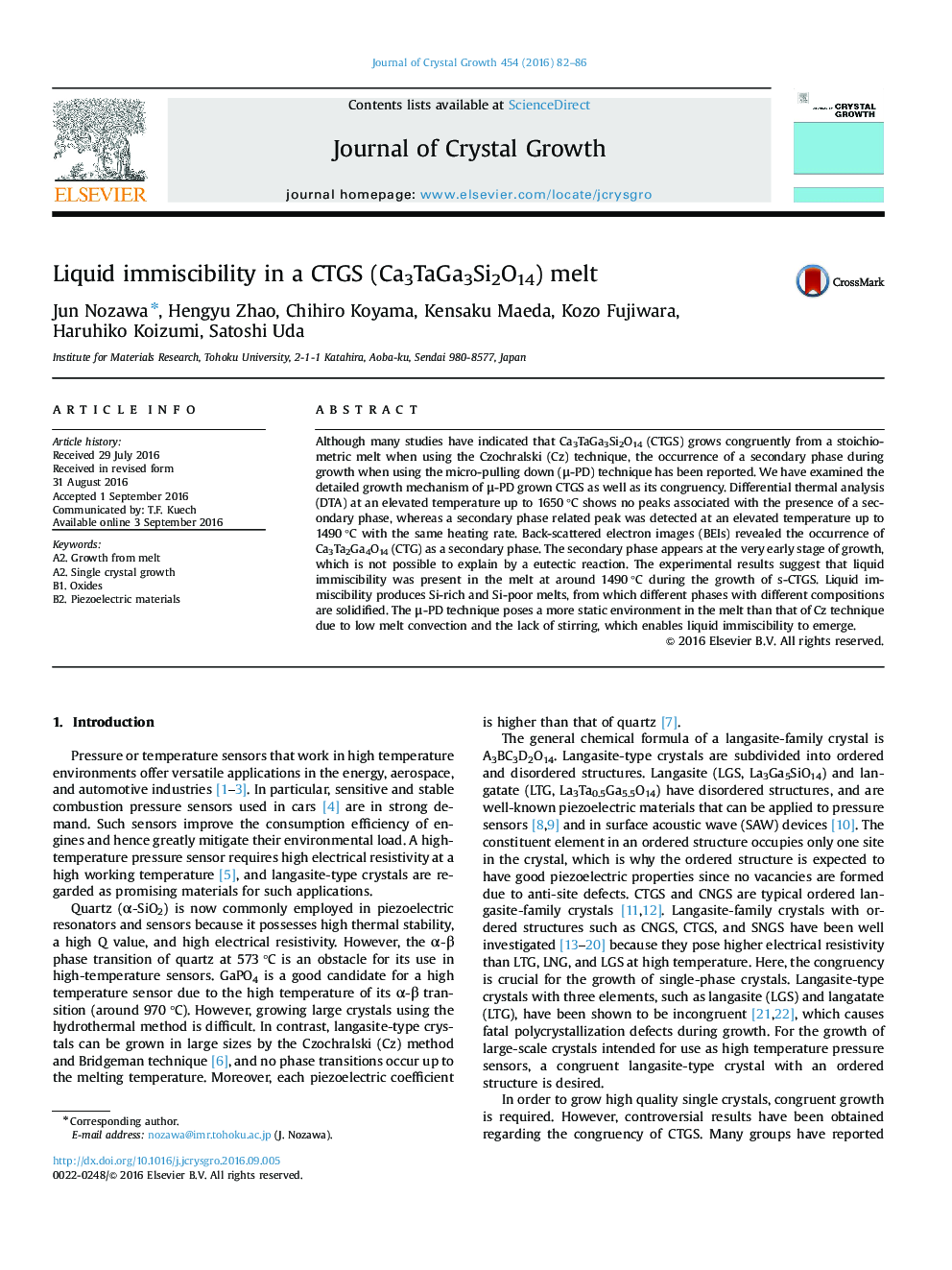| Article ID | Journal | Published Year | Pages | File Type |
|---|---|---|---|---|
| 8149259 | Journal of Crystal Growth | 2016 | 5 Pages |
Abstract
Although many studies have indicated that Ca3TaGa3Si2O14 (CTGS) grows congruently from a stoichiometric melt when using the Czochralski (Cz) technique, the occurrence of a secondary phase during growth when using the micro-pulling down (μ-PD) technique has been reported. We have examined the detailed growth mechanism of μ-PD grown CTGS as well as its congruency. Differential thermal analysis (DTA) at an elevated temperature up to 1650 °C shows no peaks associated with the presence of a secondary phase, whereas a secondary phase related peak was detected at an elevated temperature up to 1490 °C with the same heating rate. Back-scattered electron images (BEIs) revealed the occurrence of Ca3Ta2Ga4O14 (CTG) as a secondary phase. The secondary phase appears at the very early stage of growth, which is not possible to explain by a eutectic reaction. The experimental results suggest that liquid immiscibility was present in the melt at around 1490 °C during the growth of s-CTGS. Liquid immiscibility produces Si-rich and Si-poor melts, from which different phases with different compositions are solidified. The μ-PD technique poses a more static environment in the melt than that of Cz technique due to low melt convection and the lack of stirring, which enables liquid immiscibility to emerge.
Related Topics
Physical Sciences and Engineering
Physics and Astronomy
Condensed Matter Physics
Authors
Jun Nozawa, Hengyu Zhao, Chihiro Koyama, Kensaku Maeda, Kozo Fujiwara, Haruhiko Koizumi, Satoshi Uda,
